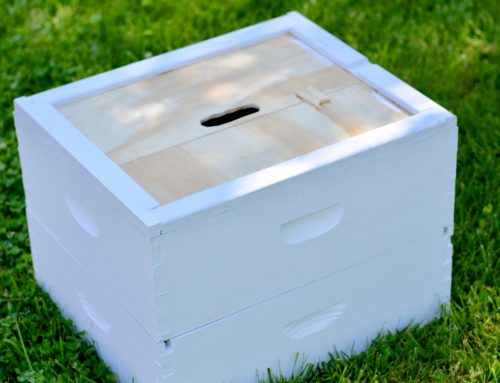Today I planted zucchini seeds! I don’t remember what inspired me to start growing zucchini several years ago, but now I can’t imagine my garden without them! Zucchini is probably my favorite vegetable to grow, between that and peppers for sure. It’s not my favorite veggie to eat but it’s probably my favorite one to grow. Why? For one, it can be direct seeded. No need to fuss with grow lights, heat pads, and finicky seeds. Direct seeding heirloom vegetables is a definite plus! Second, with zucchinis the payoff comes quickly. It’s only approximately 50 days from seed to fruit – That’s less than two months! Since my seeds are already in the ground, I will be munching zucchini by the Fourth of July! I wish I could have fresh peppers or tomatoes that quickly! Third, zucchini plants are very productive. Most hot pepper plants are productive too, but the “mass” of fruit zucchinis produce is much greater. You can fill a whole shelf in your fridge in no time with a couple zucchini plants. Finally, I love zucchinis because they are easy for beginners to successfully hand pollinate. In fact zucchinis were the first plant I ever hand pollinated! I originally bought Black Beauty Zucchini seeds from Seeds Savers Exchange and have been planting offspring of the original plants ever since.
So how did I know today was the day to plant zucchinis? The soil in my garden is 71° which means planting time. In Ohio the wise adage is: don’t plant your garden until after mother’s day. Typically, that piece of advice works out, but it is far from being scientific. The best way to determine when to plant any vegetable or herb is by testing the soil temperature. Soil temperature is incredibly important for both indoor and outdoor planting. Vegetable seeds planted before the correct soil temperature is attained may fail to germinate or the resulting plants may experience stagnate growth. I recently experienced both of these unfortunate phenomena when I planted my pea seeds too early. Rather than measuring the temperature before planting, I referred to the back side of the seed packet and estimate my seed starting date based on the two month range provided. The result was very disappointing. My peas, which typically germinate in 7 days, didn’t germinate for over a month, and then only half of them came up. I learned my lesson the hard way. And I was not about to make the same mistake with my zucchini seeds! Please learn from my misfortune: don’t waste your time planting in chilly soil; utilize a soil thermometer to determine your planting dates. Soil temperature isn’t just necessary for growing seeds outdoors. It’s also vital for starting seeds in your home. If you have ever tried planting seeds indoors, you likely had some success starting tomatoes but had difficulty starting peppers. Pepper seeds typically will not germinate unless the soil temperature is at least 70 degrees, preferably warmer. Chances are, despite your good intentions, if you didn’t use a heating mat or live in a sauna during the winter, you ended up having to purchase peppers from the store.
Because different vegetables require different germination temperatures, testing soil temperature is critical to growing vegetables which means it is important to have a soil thermometer on hand to determine proper planting dates. In reality, any probed thermometer will work. The first few years I used a meat thermometer. (I have since upgraded to an AcuRite 00661 soil thermometer). There are a number of ways to find out the required germination temperatures of different vegetables but the resource I use the most is the book Seed to Seed by Suzanne Ashworth. Not only does this book have the germination temperatures of every vegetable imaginable, but it also gives more detailed planting instructions not generally found on the reverse of seed packets. The following excerpt is typical:
Most squash plants are direct seeded, covering the seeds with 1” of soil. The optimum seed germination temperature is 70° F. with germination usually occurring in 5-10 days. Plants may be started in greenhouses, but care must be taken to set the plants out as soon as 1-2 sets of true leaves have developed. Plants allowed to become pot bound do not set out well. Plant or set out in full sun when the ground is thoroughly warmed
I rely on Seed to Seed not only for planting seeds, but also for hand pollinating and storing seeds as well. If you are interested please check out my full book review post.
Fifty days and counting until Roasted Corn and Zucchini Tacos! I can’t wait!





Leave A Comment